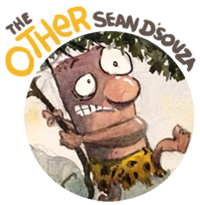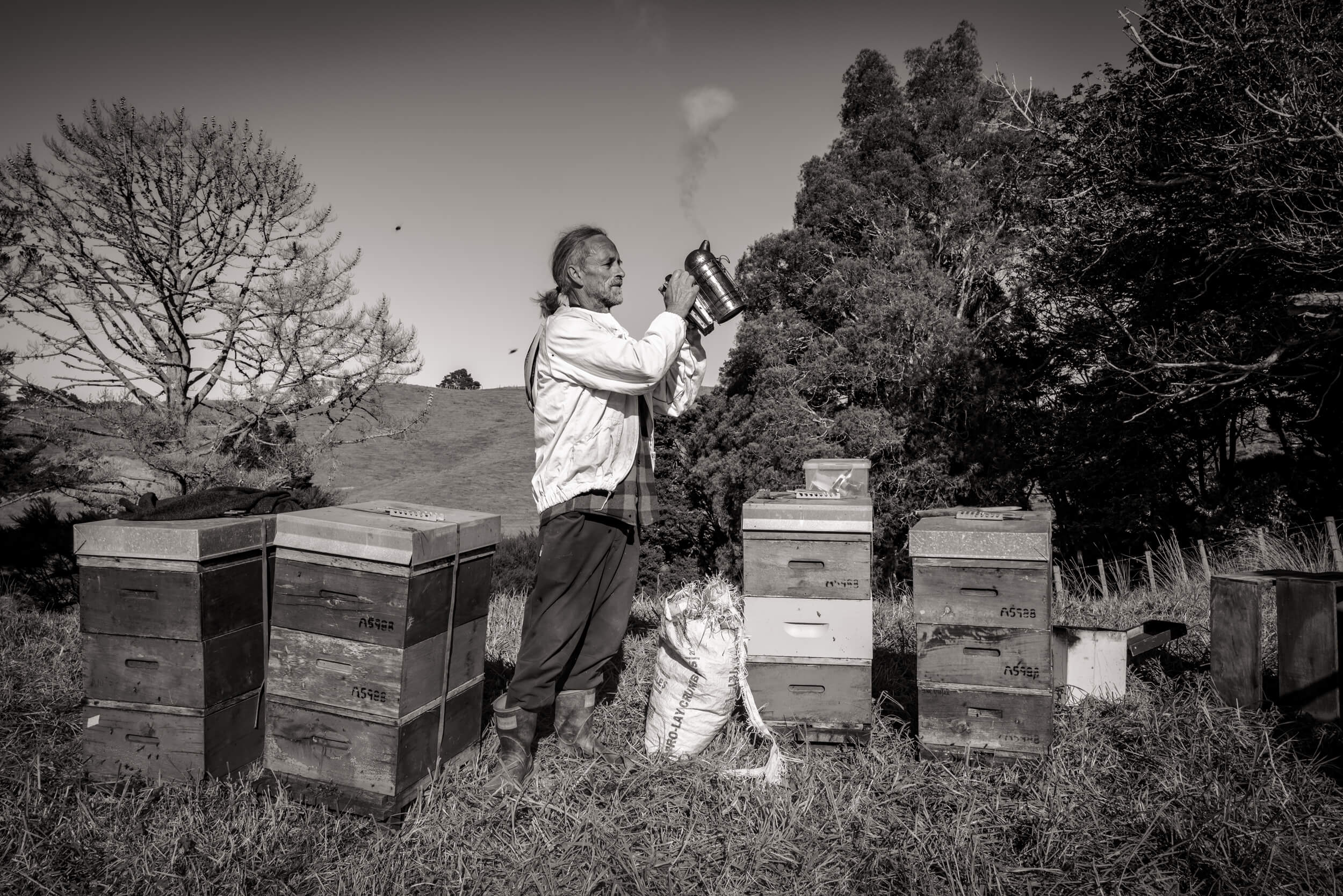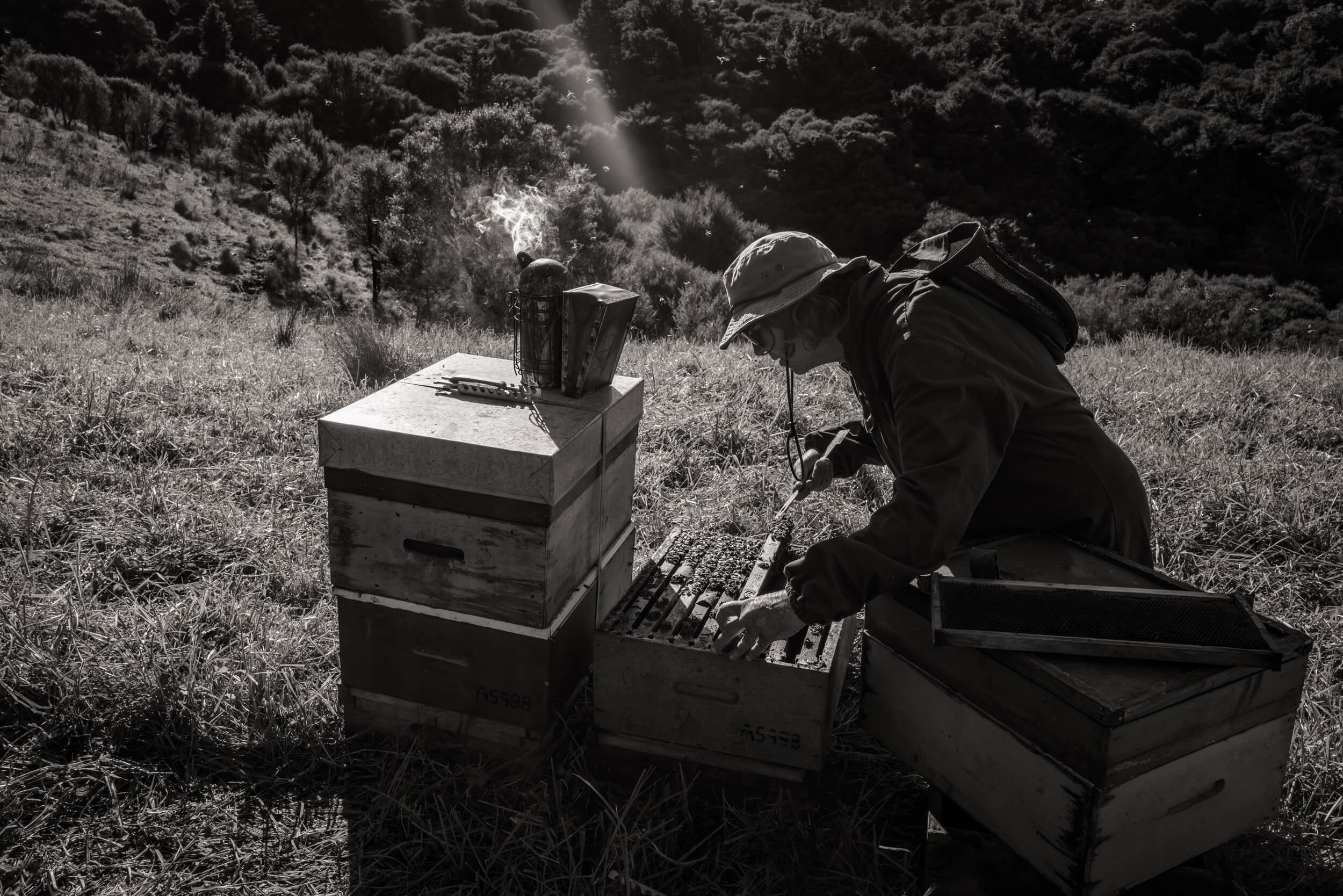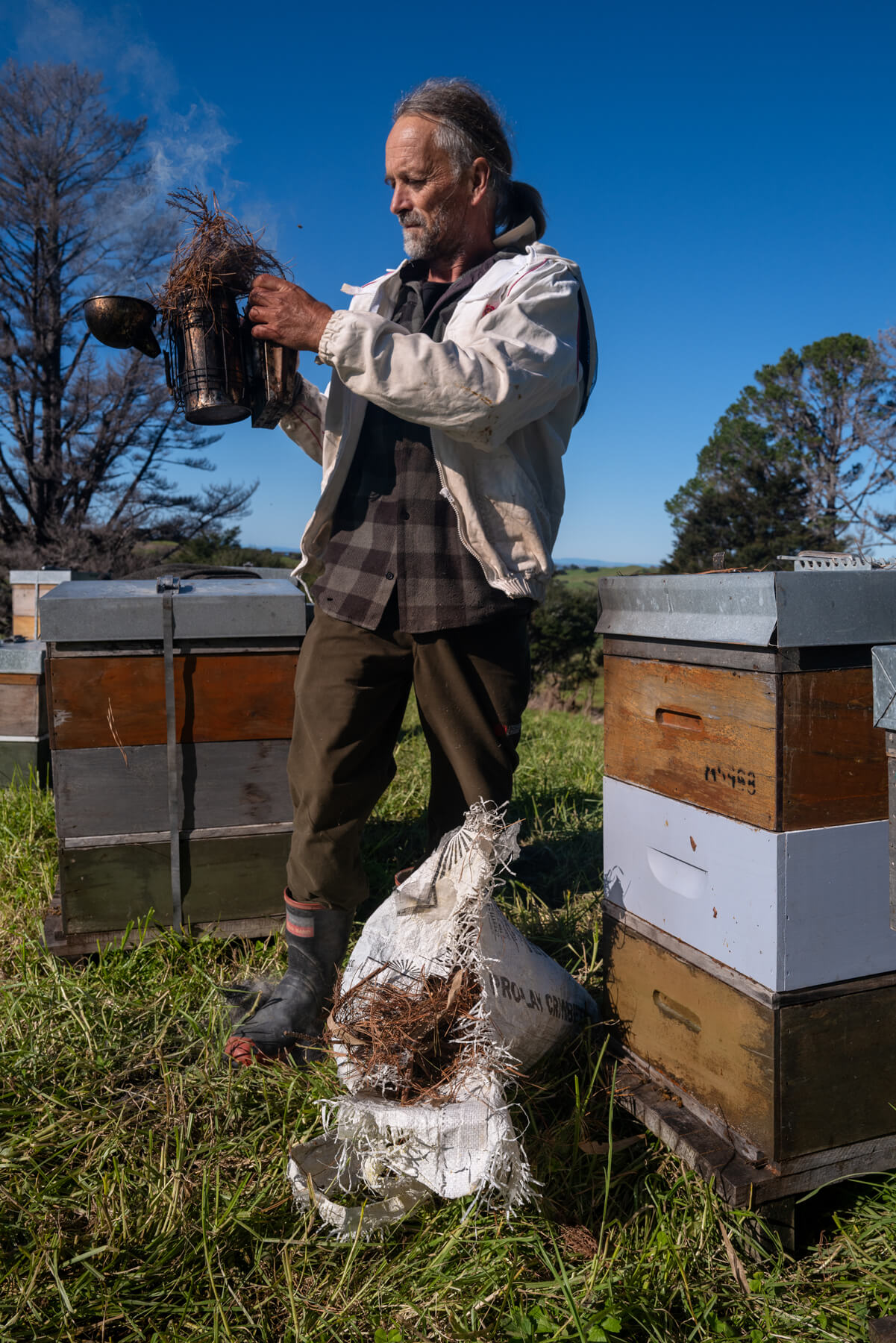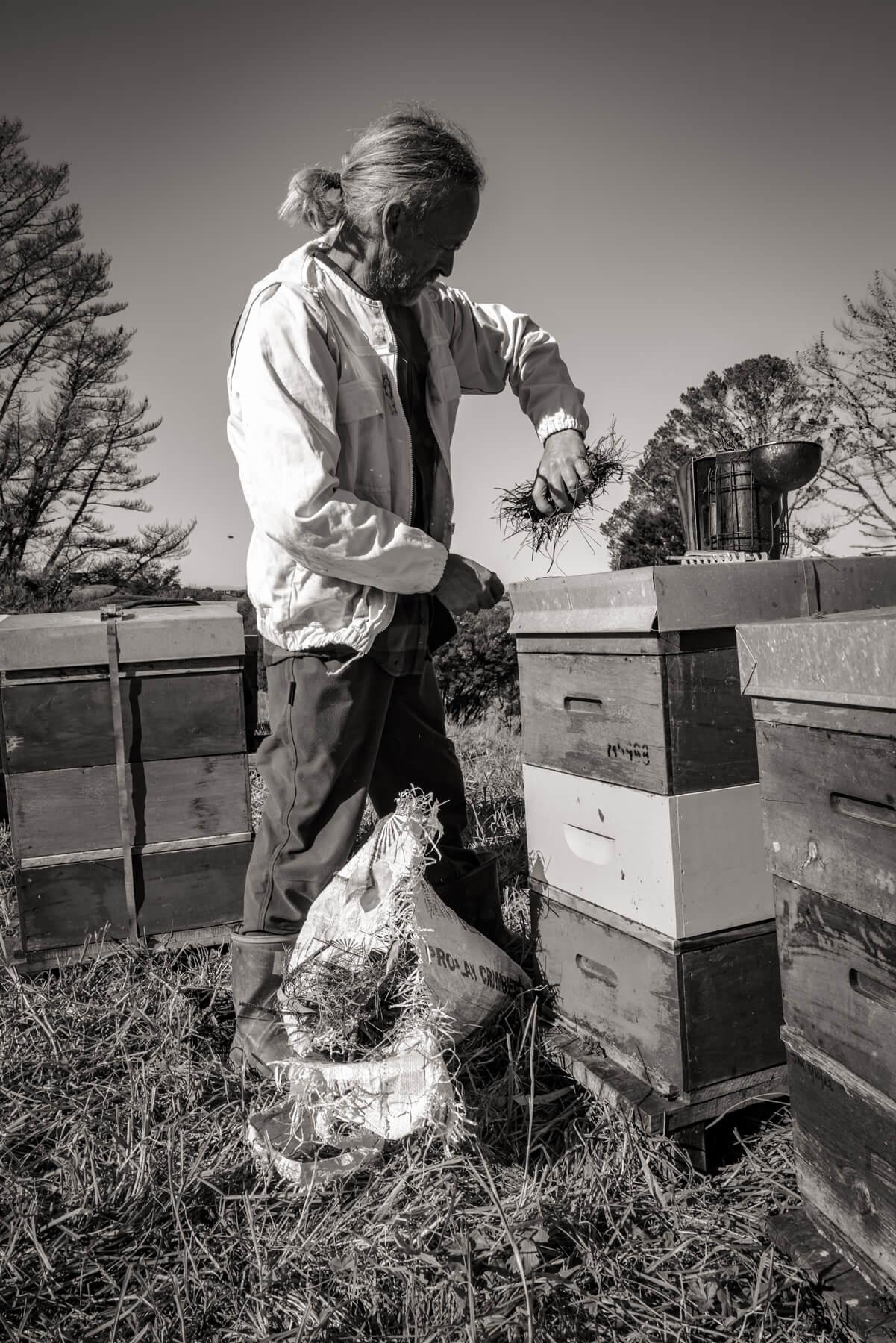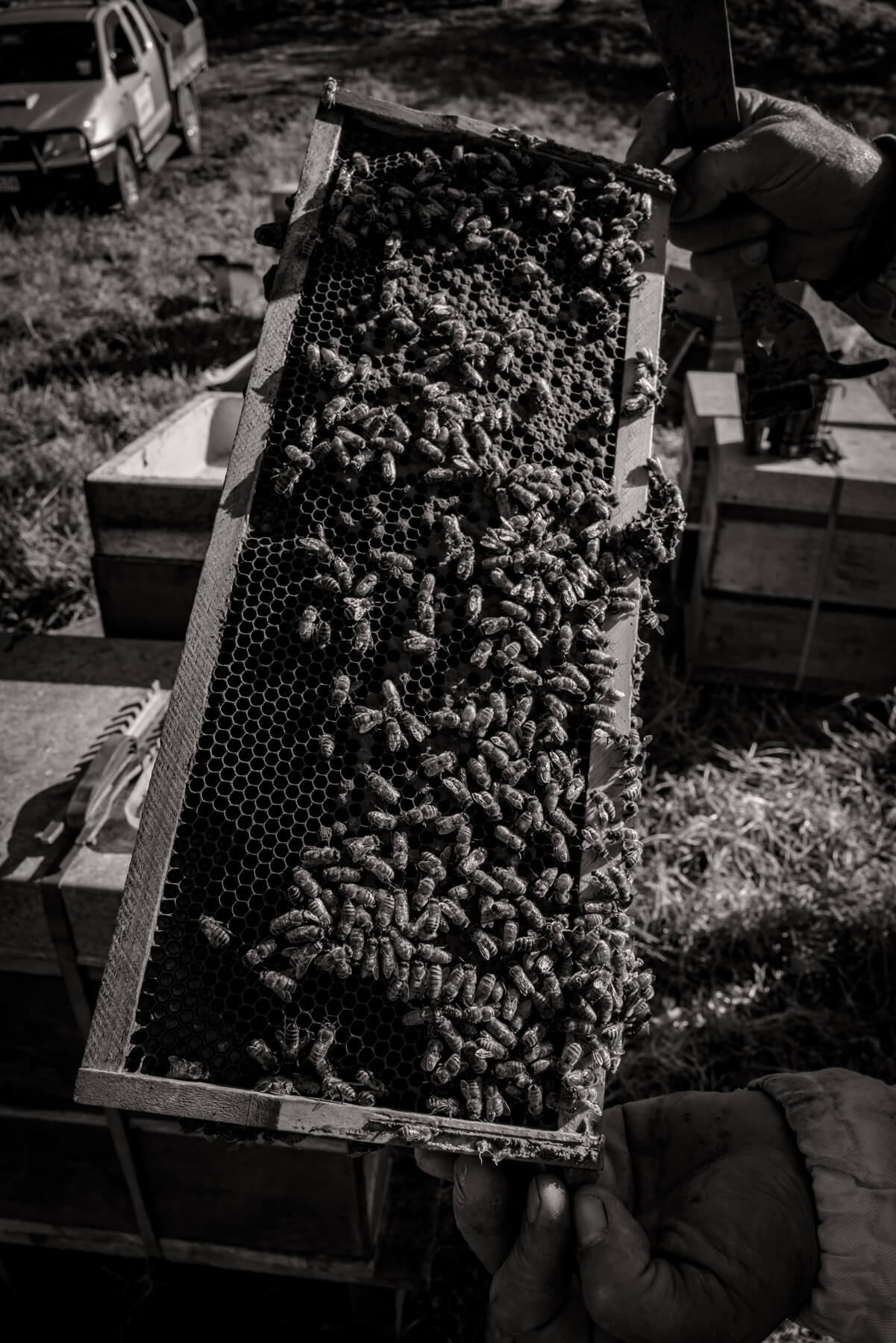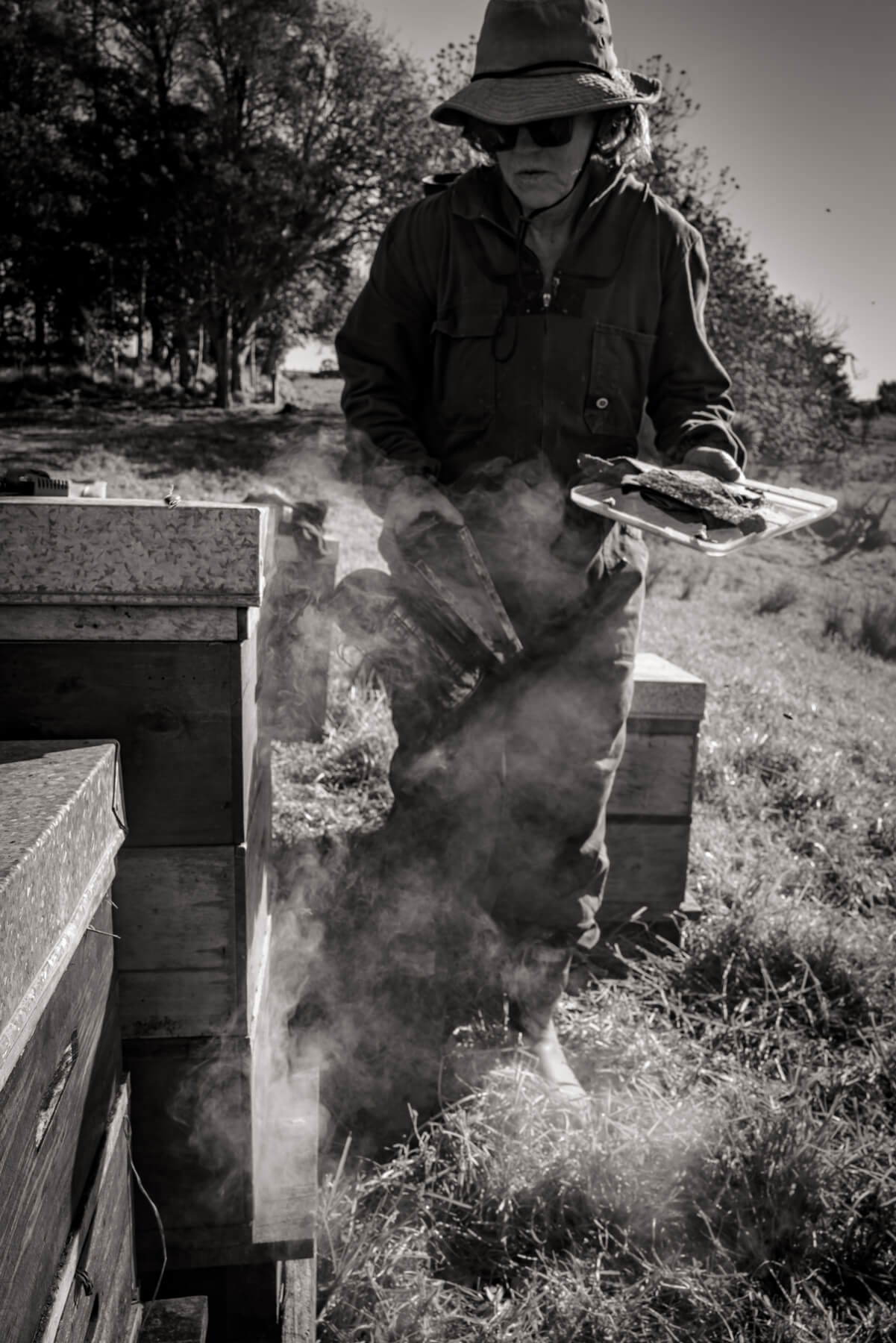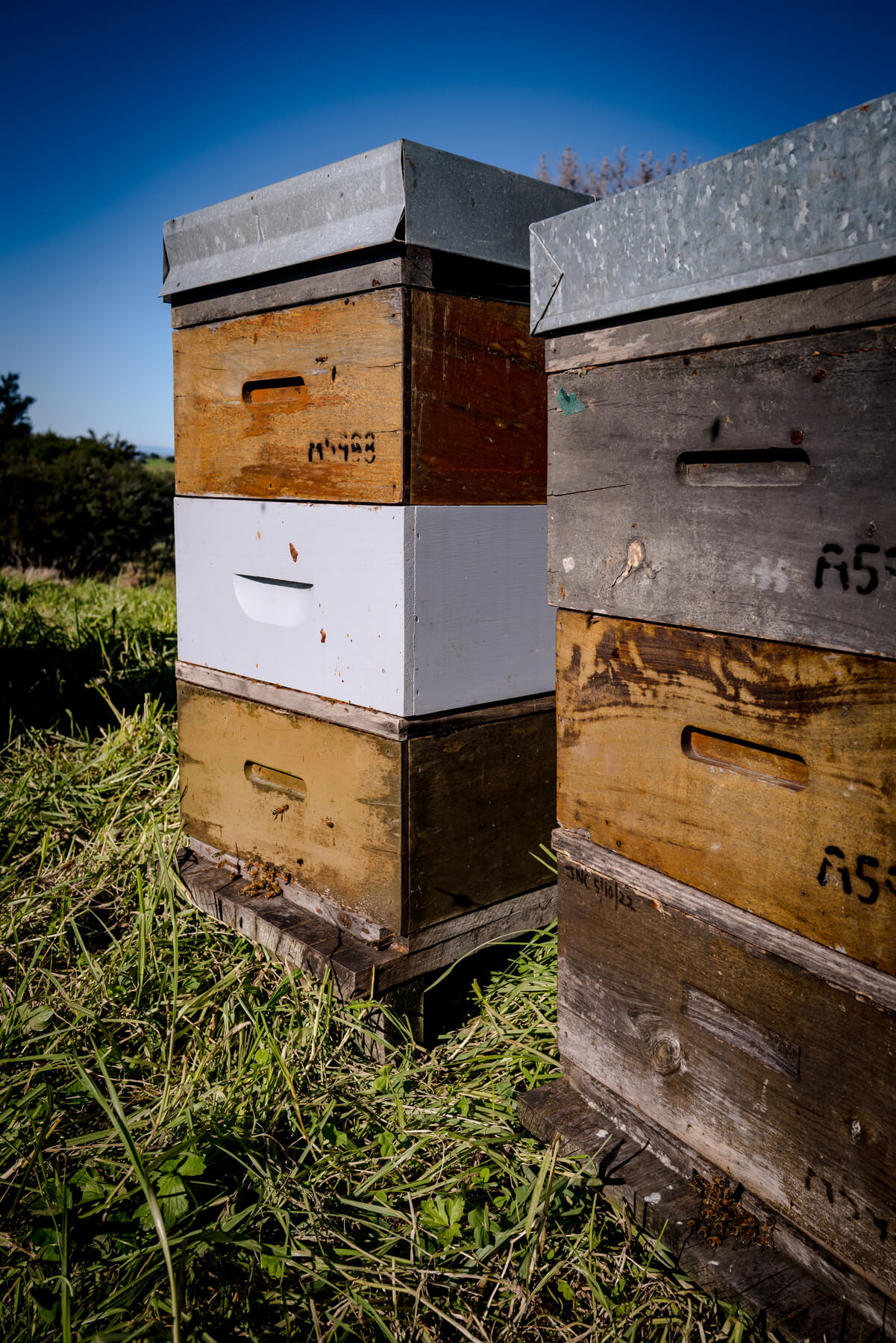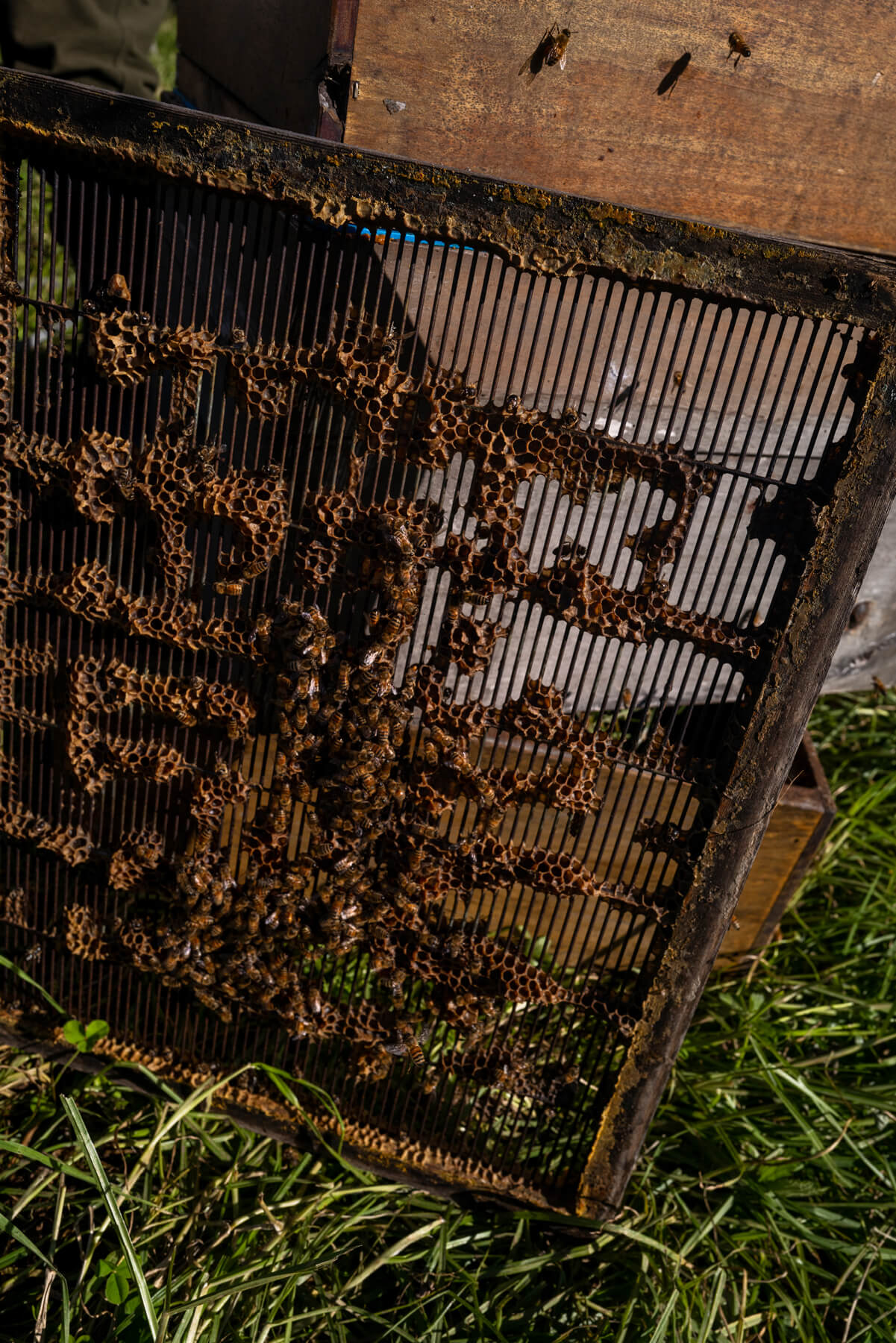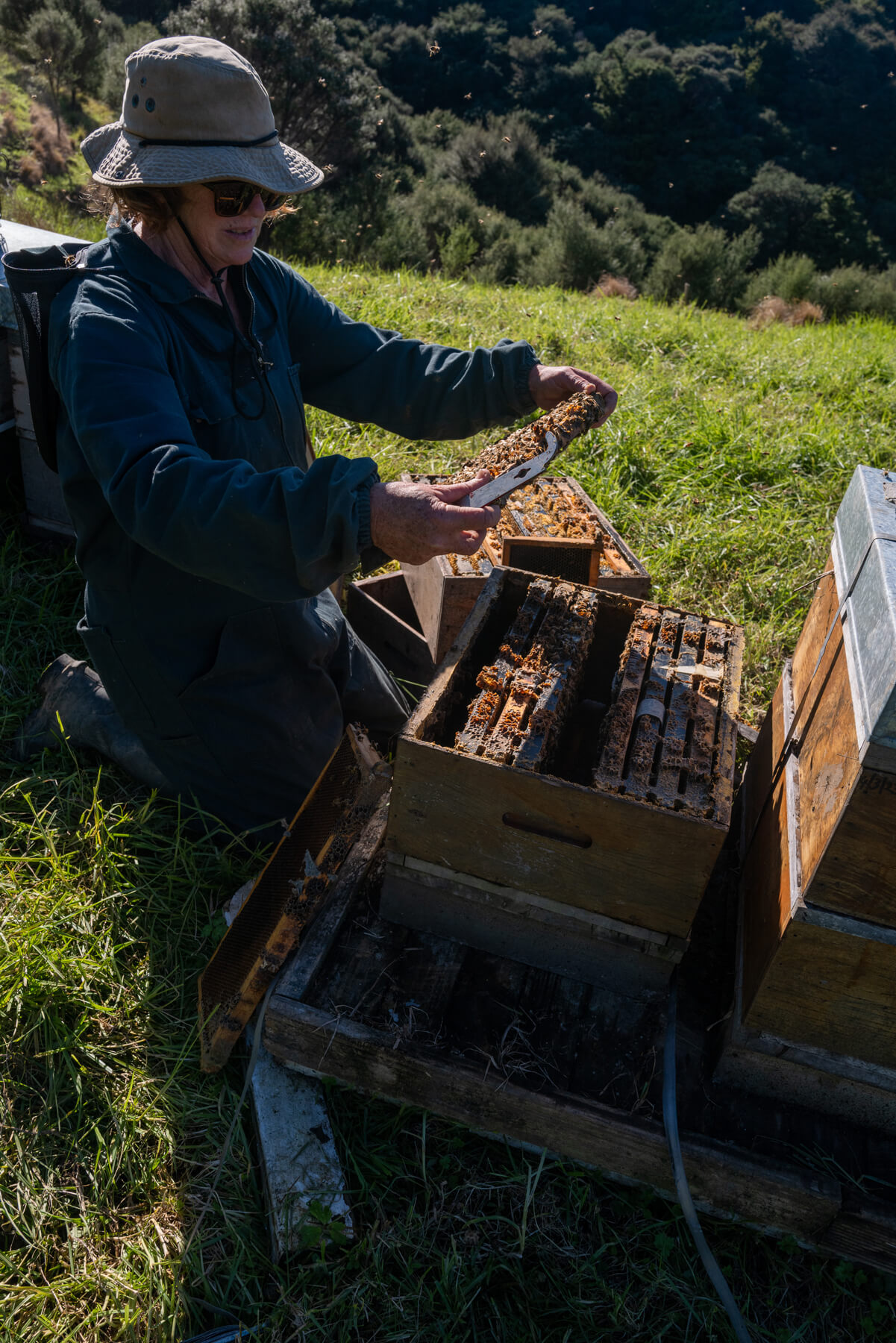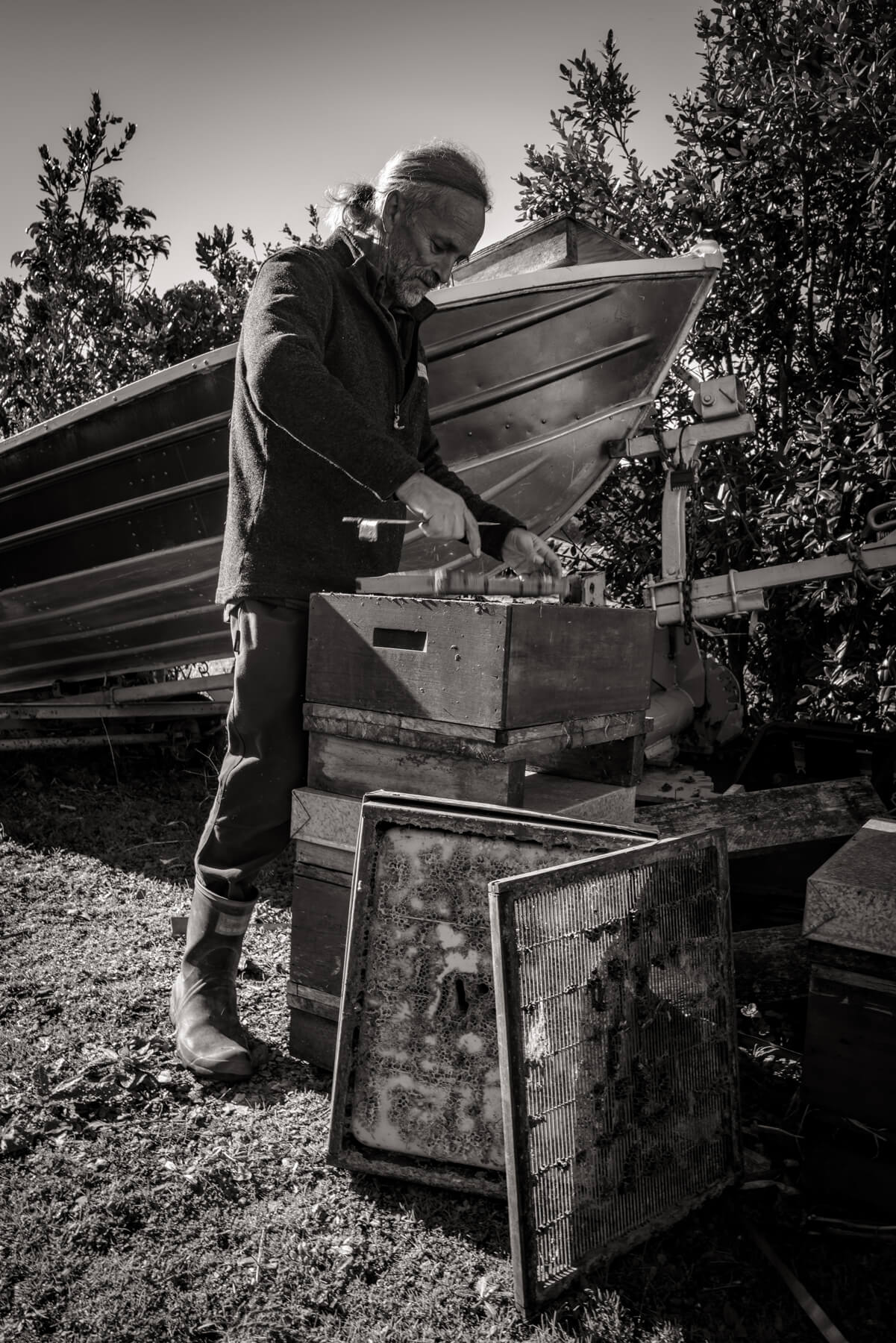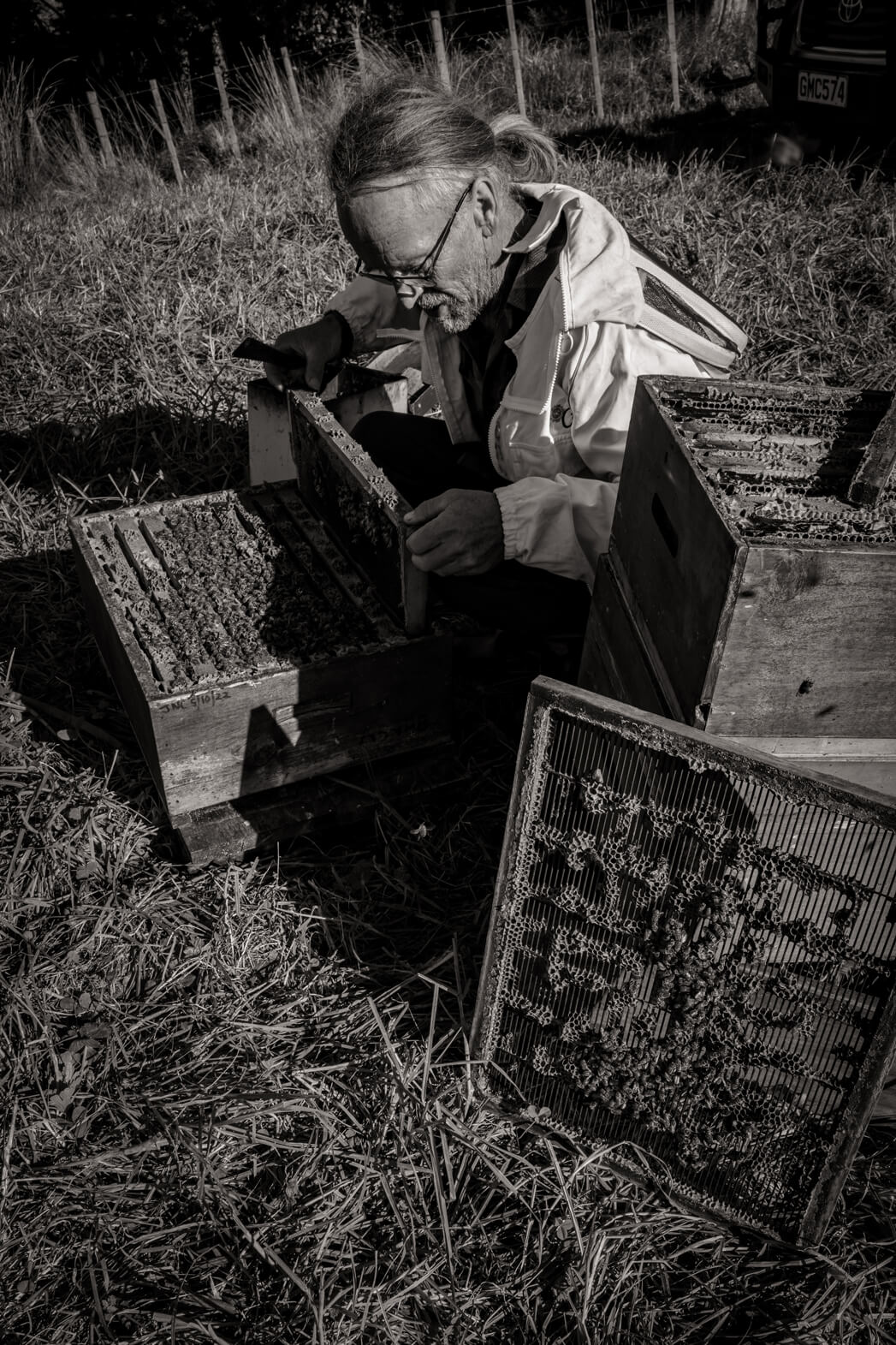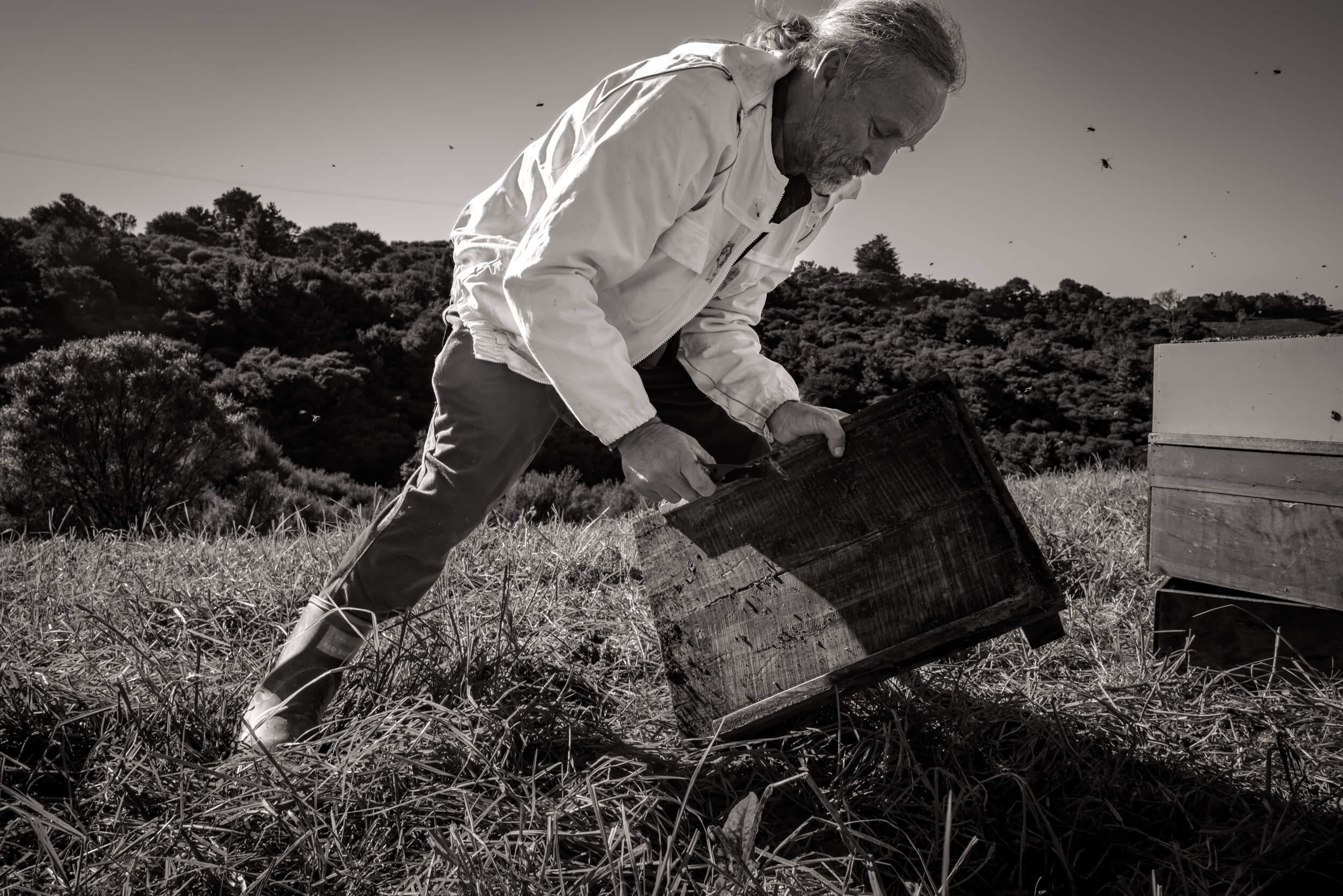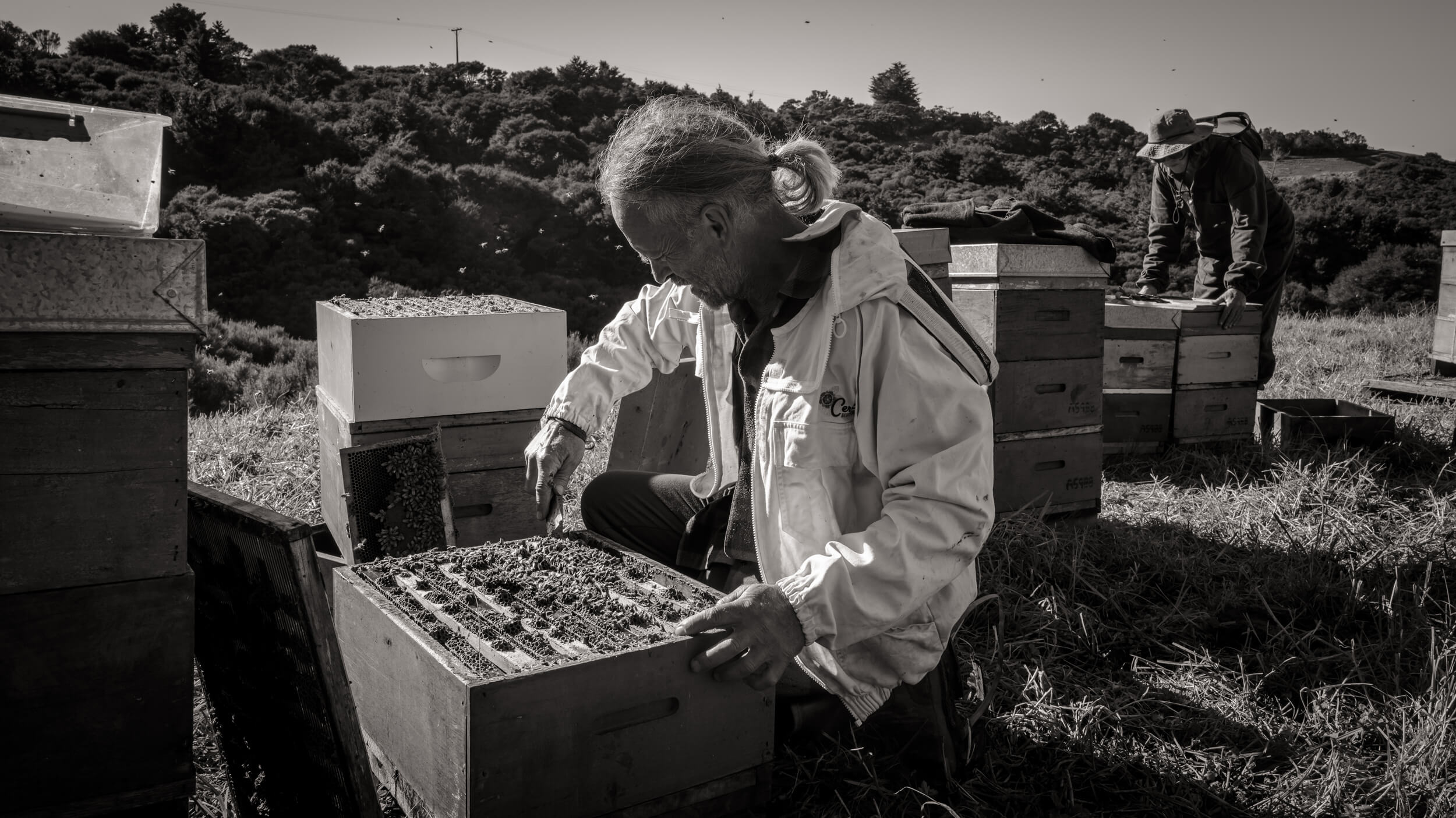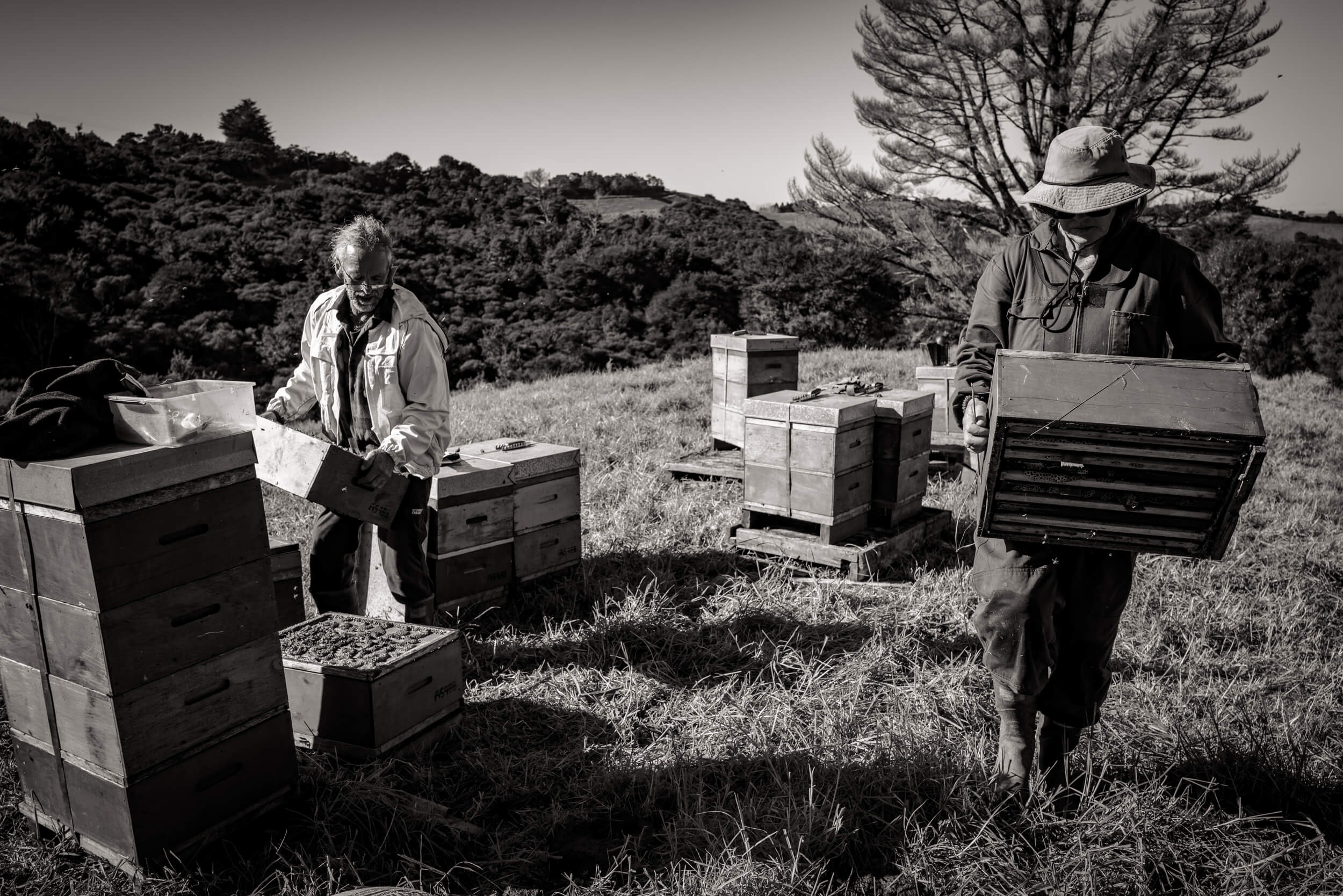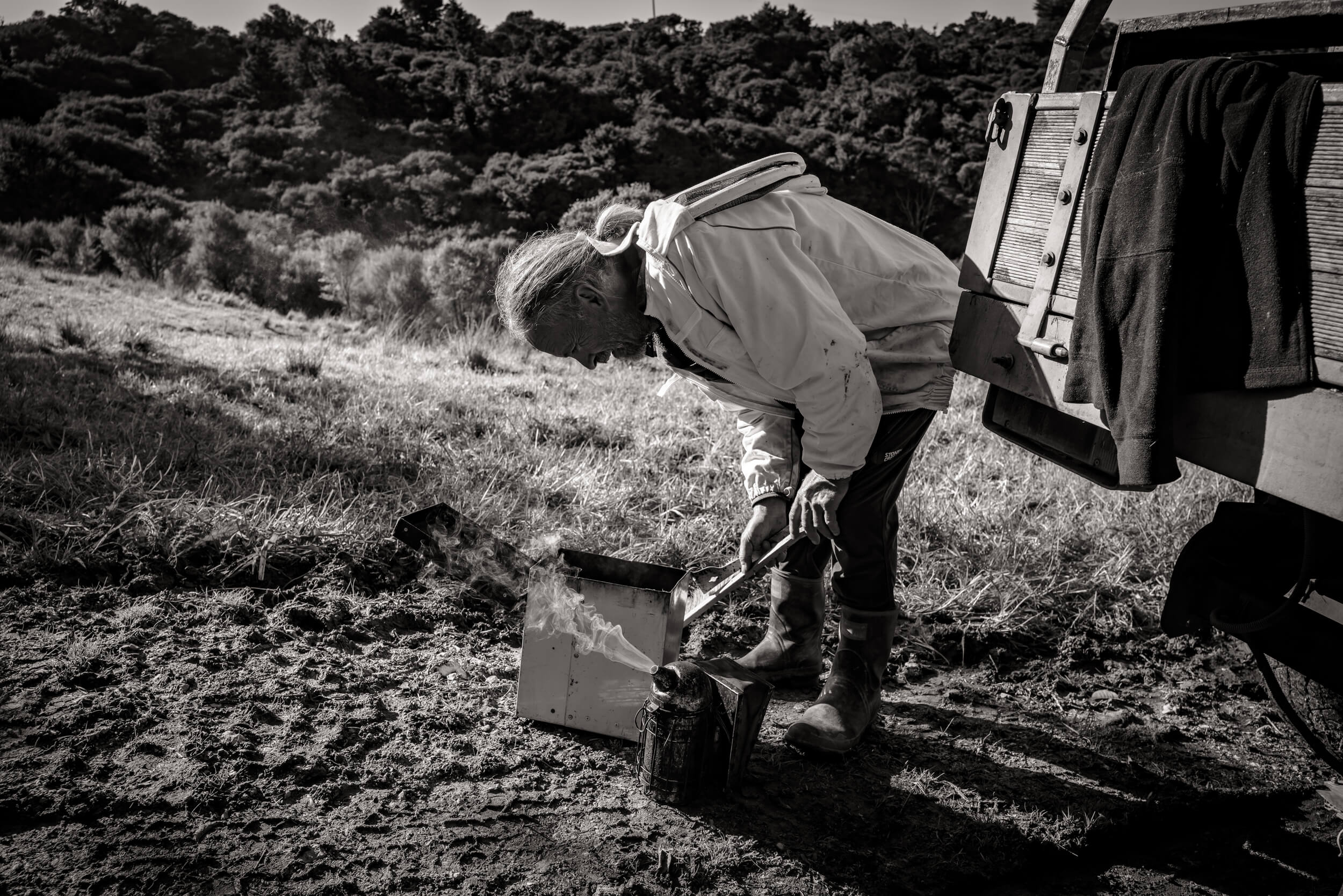The “Forest Fire” Response: When bees detect smoke, their instinctual response is to prepare for a potential evacuation of the hive, as if there’s a wildfire approaching. This triggers them to immediately begin gorging themselves on honey to fill their honey stomachs (crops) with as much food as possible. They’re essentially “packing provisions” for a potential emergency relocation. Once they’re engorged with honey, they become much more docile and less likely to sting – partly because they’re focused on this survival behavior, and partly because it’s physically more difficult for them to curve their abdomens to sting when their honey stomachs are full.
Whether the colony was decimated by wax moths, disease, or mites themselves, the same principle applies. When healthy bees from nearby colonies detect the opportunity to rob honey and other resources from a weakened or collapsed hive, they inadvertently pick up mites that climb onto them during the robbing process. The mites then hitchhike back to the robbing bees’ home colony.
Mites transfer during foraging or robbing events, as bees from different colonies interact while collecting nectar or water. Robbing bees can bring mites back to their hives, leading to rapid infestation.
The Varroa mite’s story is fascinating from an evolutionary perspective. The key to understanding why it’s less destructive to its original host lies in the concept of coevolution – the millions of years that the mite and Asian honey bee evolved together.
In Asia: The mite does little harm to A. cerana colonies and maintains a stable host-parasite relationship largely because mite reproduction occurs in drone brood, which comprises <5% of the colony’s brood
The Asian honey bee (Apis cerana) has evolved several sophisticated defense mechanisms over millions of years of coevolution:
Big commercial operations may use more standardised practices, which could be in areas with more pesticide/herbicide exposure, may feed bees sugar or substitutes, use heavy filtration or heat to increase yield or shelf stability. Environmental impact may also be greater.
Local producers take care of their bees, maintain hive health, don’t overharvest, and keep the hives in relatively clean environments.
Because they harvest, extract and bottle quickly, there’s less time for degradation. Honey is less likely to have off‐flavours caused by slow oxidation or prolonged storage.
They manage many parts of the process themselves: queen breeding, harvesting, extraction, and bottling. They do not heat the honey; they extract and bottle it soon after the honey frames are capped. The honey is strained just twice.
By not heating hard, cooling/processing lightly, retaining pollen & propolis content, their honey likely retains more of these beneficial compounds.
Many commercial honeys undergo pasteurisation or heavy heating, or aggressive filtration, which can destroy enzymes, reduce pollen, degrade volatile flavours, and degrade some antioxidants. Also, sometimes blending reduces strength.
